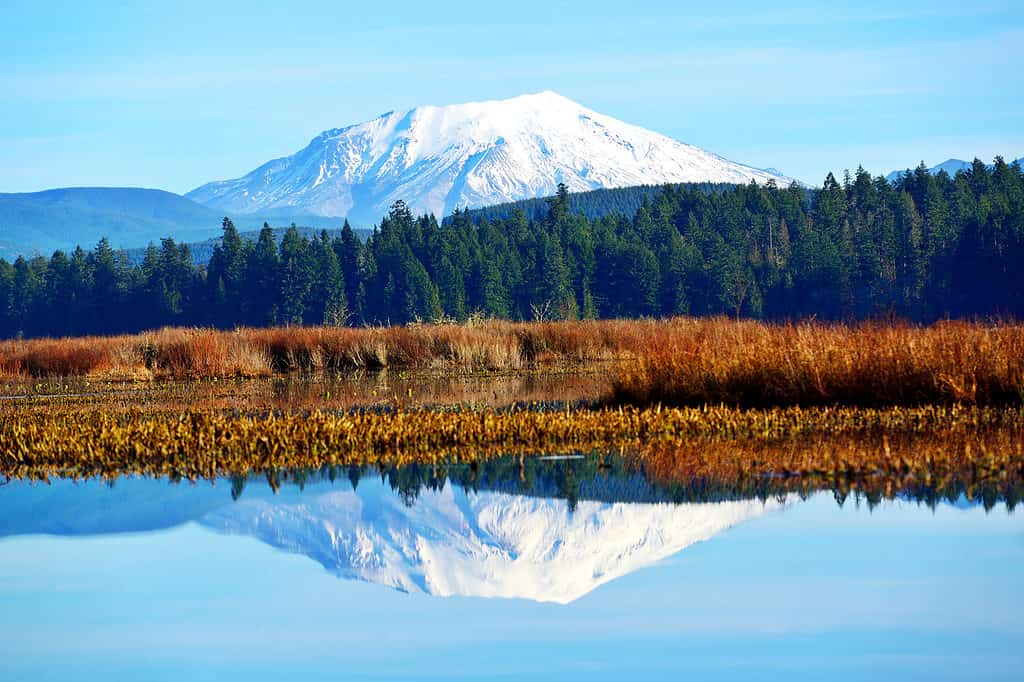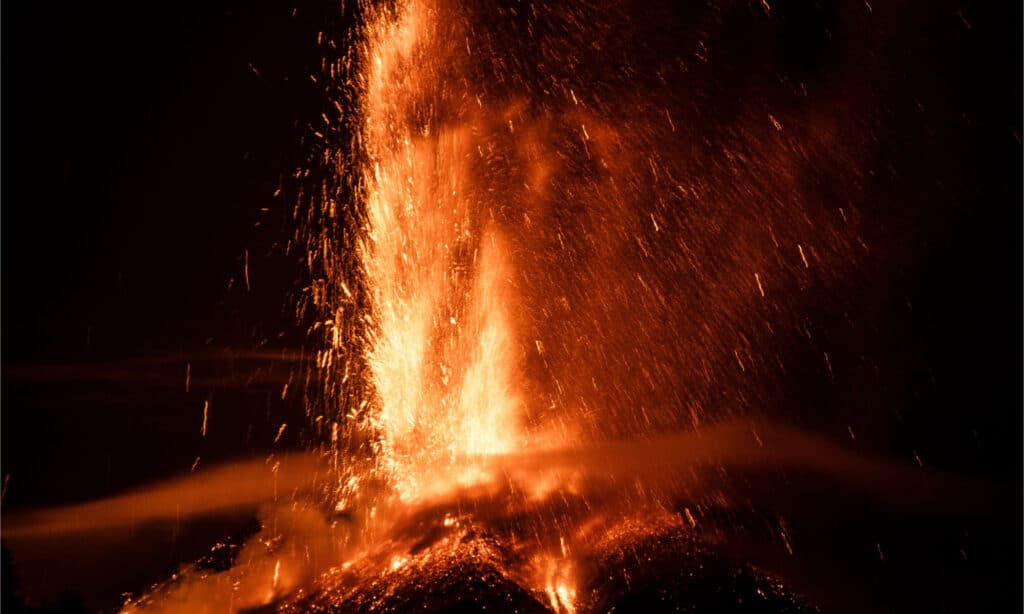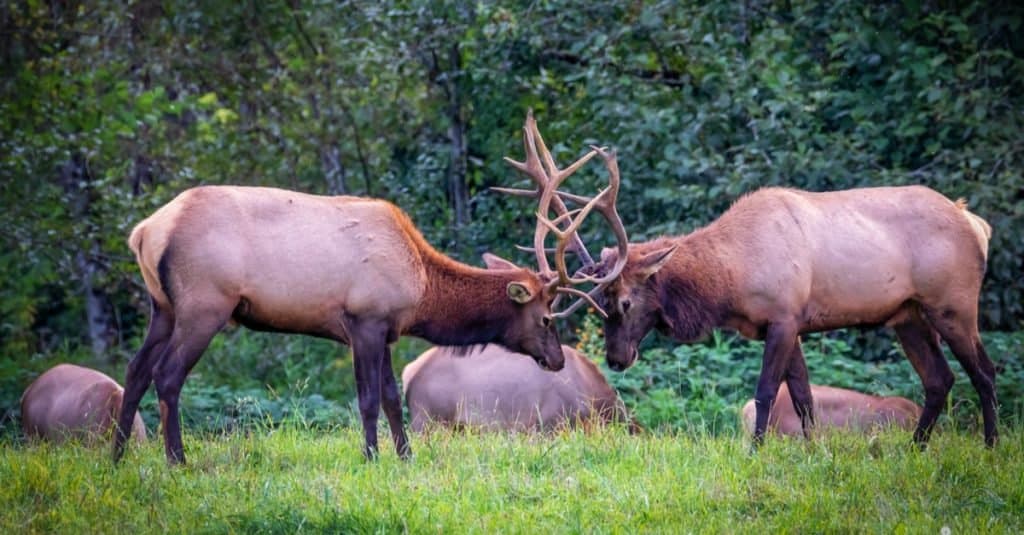Mount St. Helens is one of the more famous places in the United States. It’s famous partially because of how beautiful it is but also because of its interesting geological history. Today, we will take a look at this (in)famous mountain to learn when it was formed, if it’s still dangerous, and what makes it so special in the first place. Let’s get started!
How Was Mount St. Helens Formed?

The famous Mount St. Helens formed from the subduction zone between two large tectonic plates.
©Nadia Yong/Shutterstock.com
Mount St. Helens began forming when the Juan de Fuca tectonic plate began subducting under the North American plate around 300,000 years ago.
Mount St. Helens is a volcano that belongs to the Cascade Volcanic Arc, a chain of volcanoes that stretches from British Columbia, Canada, to Northern California. These volcanoes are fueled by the subduction of the Juan de Fuca plate under the North American plate, which creates magma that rises to the surface.
Breaking down the fancy geological terms here is pretty simple. In plain language, a massive sheet of the earth’s crust (known as a tectonic plate) began to smush up against another tectonic plate, with the boundary being where the Cascade Volcanic Arc is today. As they pressed into one another, one of the plates began to slide under the other, a process known as subduction. This subduction zone forces rock and magma up while the rest of the plate slides down. The rock and magma forced up turn into what we call mountains today!
When Was Mount St. Helens Formed?
The process of “forming” mountains takes quite a while, at least by human standards. The subduction zone that created the geologically active area that Mount St. Helens sits on began forming around 300,000 years ago, well before modern humans were in the region. Still, by mountain standards, this is a pretty recent occurrence. As a result, the region is still very active because that subduction zone is still active today!
Active subduction zones create very geologically active regions, which makes things like earthquakes and volcanic eruptions more common in these areas.
Is Mount St. Helens Dangerous Today?

Since the area is still geologically active, Mount St. Helen still has the potential for another eruption. There are lots of ways that the government monitors the volcano to ensure hikers and others living in the area are safe.
©Wead/Shutterstock.com
Speaking of volcanic eruptions, Mount St. Helens is probably most known for an eruption that occurred on May 18th, 1980. The event was catastrophic and ended up killing 57 people and damaging the surrounding area. An earthquake triggered an eruption which caused the northern side of the volcano to collapse, breaking the chamber below that contained magma. When the chamber broke, it was like a seal that exploded, resulting in a powerful blast that sent rock, ash, and molten lava across the Pacific Northwest.
Is something like that likely to happen again? Well, it very well could! Mount St. Helens is still an active volcano that could erupt again in the future. That being said, there is a lot more monitoring that happens today than there was in the 80s. The U.S. Geological Survey (USGS) monitors the volcano’s activity using seismometers, GPS, gas sensors, thermal cameras, and a whole host of other instruments. The USGS also issues volcano alerts and color codes to inform the people of current or potential hazards in the area.
To this day, seismic and geological activities happen. The most common is a rise of steam from the mountain, plus occasionally, the sight of magma as it rises out of the earth. In fact, many experts predict that a future eruption will likely occur. However, it will probably be worse due to the “current configuration” of the lava domes inside the volcano.
Wildlife Around Mount St. Helens

Roosevelt Elk, Columbia black-tailed deer, and mountain goats live near Mount St. Helens.
©Mark A Lee/Shutterstock.com
Mount St. Helens has many wildlife species that live in different habitats. The 1980 eruption killed many animals and ruined their homes in the blast zone. It also changed the water conditions for animals outside the blast zone.
That said, nature is resilient, and wildlife has mostly recovered well from the eruption. Some animals survived or moved in quickly. Others helped new plants grow by digging, spreading seeds, or adding nutrients. Wildlife numbers and types have grown as habitats have improved. Animals in the area include Roosevelt Elk, Columbia black-tailed deer, and mountain goats, while the waters include rainbow trout.
But the recovery is not over, and there are still problems to face. To this day, the tall burned remains of trees scorched by lava are still visible from the surrounding area.
Thank you for reading! Have some feedback for us? Contact the AZ Animals editorial team.








